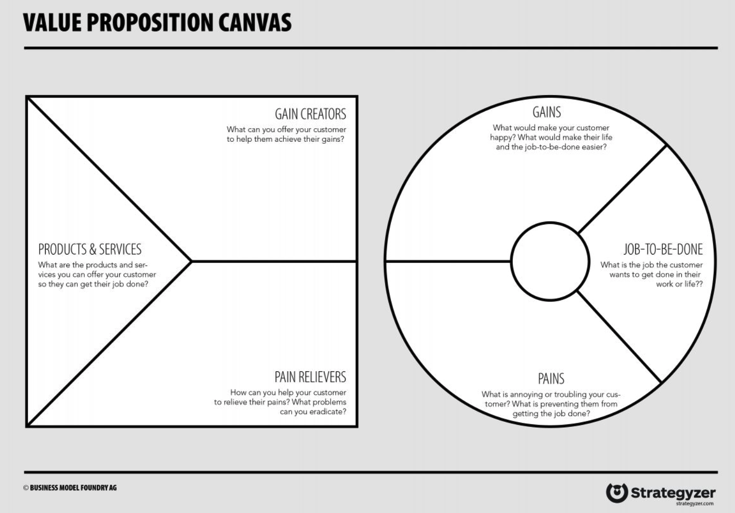The Value Proposition Canvas
Episode #1 of the course Product management toolkit by Rich Headley
Welcome to the course!
My name is Rich Headley, a Silicon Beach native with a passion for teaching product management and leadership.
This course will teach you when and how to use the tools and techniques that will level up your product management game. If used right, they’ll give you an unfair tactical advantage in the trenches with your engineers and confidence-inspiring strategic persuasiveness in the boardroom with your leaders.
Remember from High School chemistry how you needed to develop a hypothesis to test? This is an integral part of the scientific method, and to become an advanced Product Manager you have to be an expert social scientist of a strange sort—a pain scientist.
Pain in this context is something that prevents your customers from meeting their goals or objectives as opposed to just becoming an appetite for a slight improvement. The target is more likely to be attracted to a cure for their pain.
Value Proposition Canvas
A good tool to start with is called the Value Proposition Canvas, developed by Alex Osterwalder at Strategyzer.
The canvas will help you analyze your target persona’s needs:
Job-to-be-done: What does your persona need to accomplish? What are they hiring your product to do?
Pains: Where is your persona struggling to meet their goals?
Gains: What would make it easier for them to accomplish their goals?
You can then start to develop ideas for how to create those gains and eliminate those pains:
Products and services: What do you already have to offer your customer?
Gain creators: What changes to your product (or new product altogether) would help the customer meet their goals?
Pain relievers: Similar to gain creators, how can you relieve your customer’s pain (which would probably help them achieve their desired outcome)?
Let’s think about how the Value Proposition Canvas might be filled out for Tesla.
The target persona is an upper-middle-class male with a six-figure income. The jobs they’re hiring their car to do aren’t out of the ordinary—commuting, occasional long-distance trips…but also to convey an image of success and be different from others.
Performance, design, convenience, and utility are important to this persona. Those are the gain creators. Customers are willing to pay a premium to have a high-end car that will impress them and their friends while also serving many practical purposes.
What Tesla routinely needs to overcome is the persona’s concerns about frequent charging, running out of battery, price depreciation, and safety. These are pains that need to be relieved.
In summary, think about your personas from a perspective of jobs to be done, pains they have, and gains they want. Then, match all of that up with what you think your product should do. Which pains it should eliminate, which gains it should create, and therefore which features it should have. Use the Value Proposition Canvas to help you chart this out in a way that your design, engineering, and leadership team can understand the value you’re trying to unlock.
At the beginning of this lesson, I mentioned that you’ll need to think of yourself as a pain scientist. Now that you’ve developed your problem space, you understand your customer’s pains, and you’ve thought about the solutions, it’s time to generate a value hypothesis. We’ll cover that in lesson two.
Recommended reading
Share with friends


